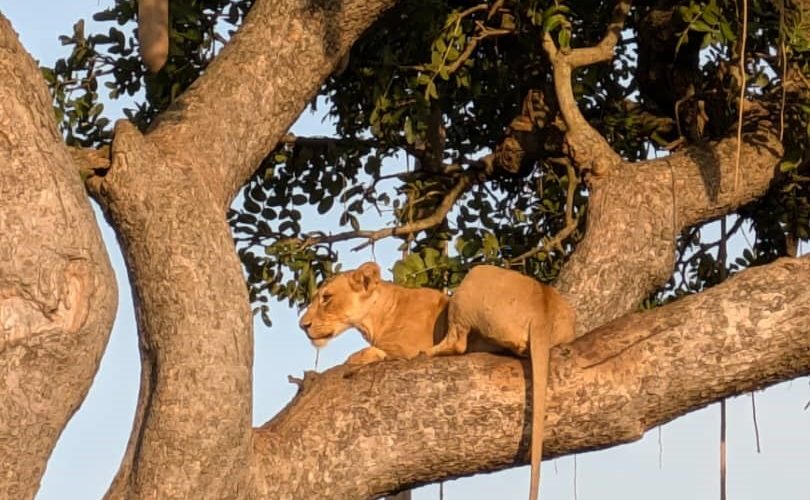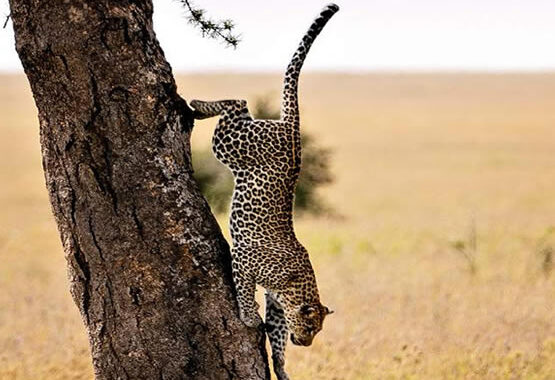Tree Climbing Lions in Uganda.
Introduction to Tree Climbing Lions in Uganda
Imagine standing in the heart of Uganda, surrounded by lush landscapes and the sounds of nature. Suddenly, your gaze shifts upwards, and there they are—majestic lions elegantly perched on branches high above you. These aren’t just any lions; these are the iconic tree climbing lions, a rare phenomenon that has captured the hearts of wildlife enthusiasts around the world.
In Uganda’s stunning wilderness, particularly in Queen Elizabeth National Park’s Ishasha sector, these remarkable creatures defy traditional lion behavior. While most tend to roam savannas or lounge in open grasslands, here they showcase an extraordinary talent for climbing trees. This unique trait sets them apart and offers a thrilling glimpse into their lives.
Join us as we delve deeper into this fascinating aspect of Ugandan wildlife and discover what makes tree climbing lions such a captivating subject for both tourists and conservationists alike!
Location of Tree Climbing Lions in Uganda
The iconic tree climbing lions of Uganda are primarily found in the Ishasha sector of Queen Elizabeth National Park. This stunning area, with its sprawling savannah and acacia trees, provides a perfect backdrop for these unique felines.
Ishasha is renowned not just for its wildlife but also for its breathtaking landscapes. The region features lush green wetlands, rolling hills, and expansive grasslands that attract diverse flora and fauna.
Visitors can spot these remarkable lions lounging on branches high above ground during their Uganda safaris. Their unusual behavior sets them apart from typical lion habits observed elsewhere in Africa.
Exploring this part of Uganda offers an adventure unlike any other. It’s a chance to witness nature’s wonders up close while experiencing the rich biodiversity that thrives within the park’s borders.
Why do lions climb trees?
Lions climbing trees is a fascinating behavior that sets them apart from their counterparts. It may seem surprising, given their size and strength, but these majestic creatures have their reasons.
One primary motive for this behavior is to escape the heat of the day. Climbing into the branches provides lions with a cooler spot away from ground-level temperatures.
Additionally, it offers an excellent vantage point for spotting potential prey or threats. From high up in the trees, they can survey their surroundings without being easily detected.
Tree climbing also showcases social dynamics among pride members. It’s not uncommon to see lions lounging together on sturdy branches—strengthening bonds while enjoying each other’s company.
This unique adaptation highlights how these incredible animals navigate their environment in remarkable ways. In Uganda’s Ishasha region, witnessing such natural behaviors adds excitement to any safari experience!
The behavior of Tree Climbing Lions
Tree climbing lions exhibit fascinating behavior that sets them apart from their counterparts. Unlike typical lions, these majestic creatures have adapted to life in the trees, often found lounging on branches.
They climb for various reasons. One primary motivation is to escape the heat of the ground below. Elevated positions provide a cooler environment during scorching afternoons.
Additionally, tree-climbing offers an advantageous vantage point for spotting prey and surveying their territory. From above, they can observe potential threats or rivals lurking nearby.
Social dynamics also play a role in this unique behavior. Young cubs are more likely to engage in playful climbs as they hone their skills while bonding with siblings.
This extraordinary adaptation showcases not only survival tactics but also highlights the complex social structures within lion prides in Uganda’s stunning landscapes.
Challenges facing the survival of Tree Climbing Lions
Tree climbing lions face numerous threats that jeopardize their survival. Habitat loss is a significant concern. As human populations expand, forests are cleared for agriculture and settlements, shrinking the lions’ natural territory.
Poaching also poses a grave risk. Although these majestic creatures are not typically targeted directly, they often fall victim to traps set for other animals. This can lead to injury or death.
Additionally, conflict with local communities arises when lions encroach on livestock areas. Farmers may resort to retaliatory killings to protect their herds, further diminishing the lion population.
Climate change exacerbates these issues too. Altered weather patterns affect prey availability and water sources, making it increasingly difficult for tree climbing lions to thrive in their unique habitat.
Together, these challenges paint a concerning picture for one of Uganda’s most fascinating wildlife spectacles. Protecting them requires urgent attention and concerted efforts from various stakeholders.
Conservation efforts for Tree Climbing Lions
Conservation efforts for tree climbing lions focus on habitat protection and community engagement. Local organizations work tirelessly to safeguard the unique ecosystem of Queen Elizabeth National Park, home to the famous Ishasha lions.
Education is key. Programs that raise awareness about these incredible creatures encourage local communities to coexist with wildlife. This leads to reduced human-wildlife conflict, benefitting both people and animals.
Research initiatives also play a crucial role. By studying lion behavior and population dynamics, scientists gather vital data that informs conservation strategies. Tracking collars help monitor movements, ensuring their safety within protected areas.
Additionally, tourism contributes significantly to conservation funding. As visitors flock for Uganda safaris specifically aimed at spotting these majestic lions in trees, they support local economies while fostering an appreciation for nature’s wonders.
Collaborative efforts between governments, NGOs, and local communities are essential in preserving the future of tree climbing lions in Uganda’s stunning landscapes.
How tourists can experience and support conservation efforts
Tourists have a unique opportunity to witness the majestic tree climbing lions in Uganda while supporting vital conservation efforts. Visiting Queen Elizabeth National Park, known for its population of Ishasha lions, offers an unforgettable experience.
Participating in guided tours led by experienced local guides enriches your understanding of these incredible animals. Your presence contributes directly to community-based conservation initiatives.
Additionally, consider engaging with local organizations that focus on wildlife protection and habitat preservation. Donations and volunteering can make a significant impact.
Stay at eco-friendly lodges that prioritize sustainable practices. This ensures your travel supports environmental stewardship while providing jobs for locals.
By sharing your adventures through social media or blogs, you raise awareness about the importance of preserving these unique ecosystems. Every voice counts in advocating for the survival of Uganda’s magnificent lions and their habitats.
Conclusion
Tree climbing lions are one of Uganda’s most unique and fascinating attractions. These majestic creatures have adapted to their environment in surprising ways, offering visitors an unforgettable experience. The Ishasha region is the prime location for witnessing these remarkable lions in action, providing a breathtaking backdrop that amplifies their allure.
Their ability to climb trees sets them apart from other lion populations. It not only helps them escape the heat on the ground but also provides a strategic advantage when hunting prey or evading rivals. Observing this behavior gives insight into their adaptability and intelligence.
However, tree climbing lions face numerous challenges threatening their survival. Habitat loss, human-wildlife conflict, and poaching pose significant risks to these incredible animals. Conservation efforts are crucial for protecting them and ensuring they thrive in their natural habitat.
Tourists play an important role in conservation through responsible tourism practices. By visiting Uganda’s national parks and supporting local economies, travelers can contribute directly to wildlife preservation initiatives while enjoying the beauty of nature.
Experiencing the enchanting sight of tree climbing lions is more than just a safari adventure; it’s an opportunity to witness nature’s wonders up close while helping ensure that future generations enjoy these iconic creatures as well.




